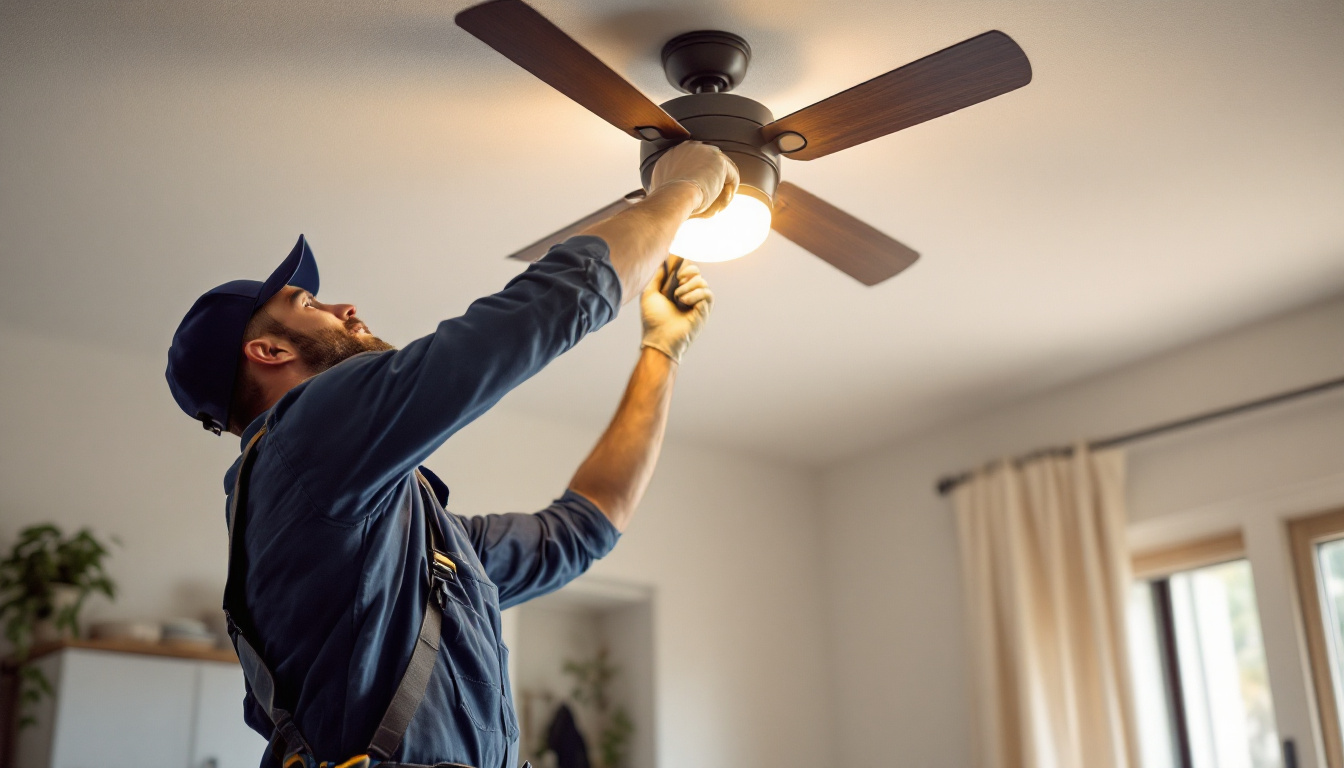
In an era where technology is evolving at an unprecedented pace, the field of lighting design and installation is undergoing a significant transformation. The concept of brightness level has emerged as a pivotal aspect of this evolution, influencing everything from energy efficiency to aesthetic appeal. For lighting contractors, understanding and adapting to these changes is essential for staying competitive and meeting client expectations.
Over the past few decades, lighting technology has shifted dramatically. Traditional incandescent bulbs have largely been replaced by energy-efficient alternatives like LEDs and compact fluorescent lamps (CFLs). This transition has not only reduced energy consumption but has also opened up new possibilities for design and functionality. The advent of LED technology, in particular, has revolutionized the industry, offering longer lifespans and a wider range of colors and intensities than ever before. As a result, architects and designers are now able to incorporate lighting as a fundamental element of their projects, rather than just a utility.
As lighting technology continues to advance, the focus has shifted towards creating adaptable and intelligent lighting systems. These systems allow for precise control over brightness levels, color temperature, and even automated adjustments based on the time of day or occupancy. This adaptability is crucial for modern spaces, where the needs of occupants can vary significantly throughout the day. For instance, in commercial environments, lighting can be adjusted to enhance focus during working hours and shift to warmer tones in the evening to create a more relaxed atmosphere. This dynamic approach not only improves user experience but also contributes to energy savings, as lights can be dimmed or turned off in unoccupied areas.
Smart lighting solutions are at the forefront of this evolution. With the integration of IoT (Internet of Things) technology, lighting systems can now be controlled remotely via smartphones or smart home devices. This capability not only enhances convenience but also allows for more efficient energy usage, contributing to sustainability goals. Homeowners can set schedules, create scenes for different occasions, and even monitor energy consumption through user-friendly apps. This level of control empowers individuals to take charge of their energy usage, making informed decisions that align with their lifestyle and environmental values.
Moreover, smart lighting can be programmed to adjust brightness levels based on specific activities or moods. For instance, a dimmer setting may be ideal for a cozy evening gathering, while brighter lighting can enhance productivity in a workspace. This level of customization is increasingly appealing to clients seeking to create versatile environments. Additionally, smart lighting systems can integrate with other smart home technologies, such as security systems and thermostats, to create a cohesive and responsive home ecosystem. This interconnectedness not only elevates the user experience but also paves the way for future innovations in home automation.
Another significant trend in lighting design is the concept of human-centric lighting. This approach emphasizes the importance of lighting in supporting human health and well-being. Research has shown that the right lighting can improve mood, productivity, and even sleep quality. By focusing on the biological effects of light, designers are now more aware of how different light spectrums can influence circadian rhythms, which govern our sleep-wake cycles. This understanding has led to the development of lighting solutions that mimic natural daylight, promoting alertness during the day and relaxation in the evening.
By considering factors such as color temperature and brightness levels, lighting contractors can design spaces that cater to the biological needs of occupants. For example, cooler, brighter light can be beneficial during the day to promote alertness, while warmer, softer light can create a calming atmosphere in the evening. This understanding of the relationship between lighting and human behavior is crucial for creating spaces that enhance quality of life. Furthermore, the integration of sensors that detect natural light levels can help optimize artificial lighting, ensuring that spaces remain well-lit without unnecessary energy expenditure. As the field of human-centric lighting continues to evolve, we can expect to see even more innovative solutions that prioritize the well-being of individuals in both residential and commercial settings.
As environmental concerns continue to rise, energy efficiency and sustainability have become paramount in lighting design. Clients are increasingly seeking solutions that not only reduce energy consumption but also minimize their carbon footprint.
LED technology has played a significant role in this shift, offering substantial energy savings compared to traditional lighting options. Additionally, advancements in lighting controls, such as occupancy sensors and daylight harvesting systems, further enhance energy efficiency by ensuring that lights are only used when needed.
Lighting contractors must also navigate a landscape of regulations and incentives aimed at promoting energy-efficient practices. Many regions offer rebates or tax incentives for the installation of energy-efficient lighting systems, making it financially advantageous for clients to invest in modern solutions.
Staying informed about these regulations is essential for contractors. Not only does it allow for compliance, but it also positions contractors as knowledgeable partners in helping clients make informed decisions about their lighting choices.
Incorporating sustainable practices into lighting design goes beyond just choosing energy-efficient products. It involves considering the entire lifecycle of the lighting system, from production to disposal. Contractors can play a pivotal role in advocating for products that are not only efficient but also made from sustainable materials.
Additionally, designing for longevity and ease of maintenance can further enhance sustainability. By selecting durable products and creating designs that facilitate easy upgrades or replacements, contractors can ensure that lighting systems remain effective and efficient over time.
Brightness level is a critical factor in lighting design, influencing both the functionality and aesthetic appeal of a space. Achieving the right balance of brightness can enhance the overall experience for occupants, making it essential for contractors to understand the nuances of light levels.
Different spaces require different brightness levels. For example, a retail environment may benefit from brighter lighting to attract customers and highlight products, while a residential setting may call for softer, more ambient lighting to create a cozy atmosphere. Understanding these distinctions is key to delivering tailored solutions that meet client needs.
One effective strategy for achieving optimal brightness levels is through layering light. This technique involves combining different types of lighting—ambient, task, and accent—to create a well-rounded illumination scheme. Each layer serves a specific purpose, contributing to the overall functionality and aesthetics of the space.
For instance, ambient lighting provides general illumination, while task lighting focuses on specific areas where activities are performed, such as reading or cooking. Accent lighting can highlight architectural features or artwork, adding depth and interest to the design. By carefully considering the brightness levels of each layer, contractors can create dynamic and versatile spaces.
Adjustable lighting solutions, such as dimmers and tunable white lighting, offer contractors the ability to customize brightness levels based on client preferences and specific activities. Dimmers allow for quick adjustments, enabling occupants to create the desired atmosphere with ease.
Tunable white lighting goes a step further, allowing for adjustments in both brightness and color temperature. This flexibility is invaluable in spaces where different activities occur throughout the day. For example, a conference room may require bright, cool lighting during meetings but warmer, softer light for informal gatherings. By incorporating adjustable solutions, contractors can enhance the functionality of their designs.
As lighting technology continues to advance, the installation process is also evolving. Contractors must adapt to new techniques and tools that streamline the installation process while ensuring high-quality results.
One notable trend is the increasing use of modular lighting systems. These systems allow for easier installation and customization, enabling contractors to create tailored solutions that meet specific client needs. Modular designs can be easily modified or expanded, providing flexibility for future changes.
With the rapid pace of technological advancements, ongoing training and skill development are essential for lighting contractors. Staying current with industry trends, new products, and installation techniques ensures that contractors can provide the best possible service to their clients.
Many manufacturers offer training programs and resources to help contractors stay informed. Additionally, industry associations often provide workshops and seminars on emerging technologies and best practices. By investing in education, contractors can enhance their expertise and remain competitive in a changing market.
The future of lighting design and installation also involves greater collaboration with other disciplines, such as architecture and interior design. By working closely with architects and designers, lighting contractors can ensure that lighting solutions are seamlessly integrated into the overall design of a space.
This collaborative approach not only enhances the aesthetic appeal of a project but also allows for more innovative solutions. For example, architects may design spaces with specific lighting needs in mind, while contractors can provide insights on the best products and techniques to achieve the desired outcomes.
The future of lighting design and installation is bright, with exciting advancements in technology and a growing emphasis on energy efficiency, sustainability, and human-centric design. For lighting contractors, embracing these changes is essential for staying relevant in a competitive market.
By understanding the importance of brightness levels, incorporating smart technologies, and prioritizing collaboration with other disciplines, contractors can deliver exceptional lighting solutions that meet the evolving needs of clients. The journey ahead is filled with opportunities for innovation and creativity, making it an exciting time to be involved in the world of lighting design.
Ready to elevate your lighting designs with the latest advancements in technology and sustainability? At LumenWholesale, we provide lighting contractors like you with the highest quality, spec-grade lighting products at unbeatable wholesale prices. Say goodbye to inflated markups and hello to a vast selection of reliable, high-performance lighting that meets the most rigorous industry standards. With free shipping on bulk orders, you can secure premium lighting solutions at the best value — all without hidden fees or compromises. Don’t miss out on the perfect blend of quality, affordability, and convenience. Visit LumenWholesale now and discover how we can help you shine brighter in the future of lighting design and installation.

Discover the top challenges lighting contractors face when installing ceiling fan light kits.

Discover the most frequent pitfalls lighting contractors encounter with can light installations.

Discover the essential strategies and tips for lighting contractors working with T8 bulbs.

Discover the often-overlooked examples of metal halides that can transform lighting projects.